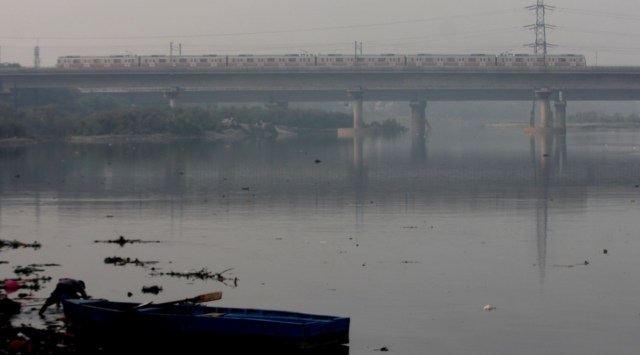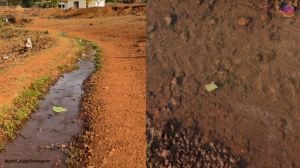- India
- International
Water supply in Delhi hit as Yamuna’s ammonia levels rise
Treatment and pumping of water from five out of eight treatment plants in the city have been affected, resulting in a massive disruption of supply. These are the Sonia Vihar, Bhagirathi, Wazirabad, Chandrawal and Okhla water treatment plants.
 Yamuna river, New Delhi (Express Photo by Amit Mehra)
Yamuna river, New Delhi (Express Photo by Amit Mehra)With ammonia levels having risen in the Yamuna River, water supply across several areas in the city has been disrupted, according to the Delhi Jal Board (DJB).
Treatment and pumping of water from five out of eight treatment plants in the city have been affected, resulting in a massive disruption of supply. These are the Sonia Vihar, Bhagirathi, Wazirabad, Chandrawal and Okhla water treatment plants.
A statement from the DJB said that supply would be affected in the evening on Saturday and in the morning and evening on Sunday. Areas that will be affected include East Delhi, Northeast Delhi, South Delhi, parts of the New Delhi Municipal Council area, and parts of Burari, Model Town, Jahangirpuri, Kamla Nagar, Karol Bagh, Civil Lines, Sarita Vihar, Vasant Kunj, Moolchand and Greater Kailash.
Ammonia is an indicator of pollution in the river, and the level on Saturday was around 2.2 ppm (parts per million), according to a senior DJB official. “This is too high a level to treat and the five plants have taken a hit. BIS standards permit about 0.5 ppm for drinking water,” he said. Chlorine, which is used to disinfect the water, also neutralises ammonia. “But high levels of ammonia means that the chlorine byproducts formed through reaction with ammonia, like chloramines, will be high. These byproducts are not safe in drinking water,” the official said.
“We usually see high levels of ammonia around long holiday periods like this one, and around Diwali and Chhath Puja, when offices are closed and enforcement is low. While the levels have gone up to 3 ppm in the past, ammonia level over 2 ppm is usually rare,” he said, adding that supply can be restored to normal levels only if sufficient water is released via the Wazirabad barrage. Since work is underway in the Ganga canal, the Sonia Vihar and Bhagirathi water treatment plants have also been dependent on the Yamuna, resulting in five plants being affected, he said. These two plants are usually not affected by ammonia levels in the Yamuna.
Apr 26: Latest News
- 01
- 02
- 03
- 04
- 05































